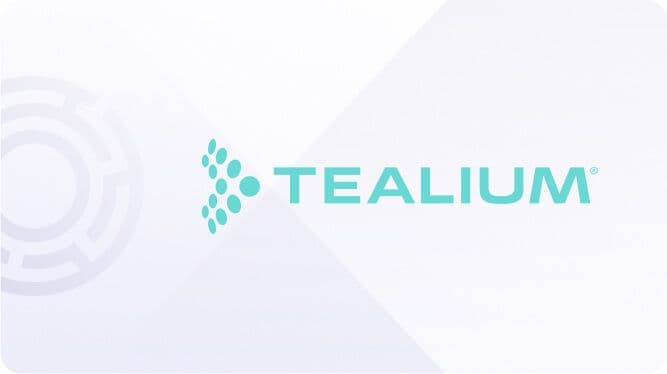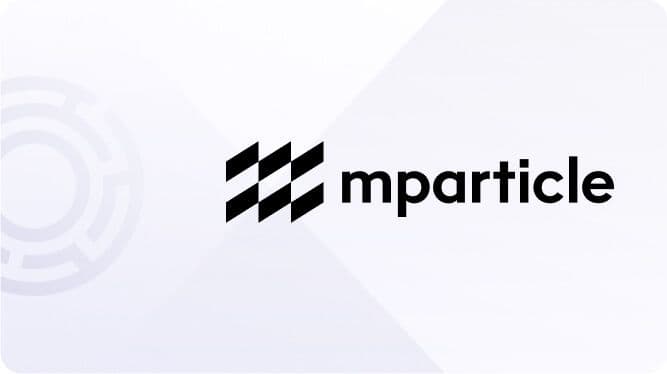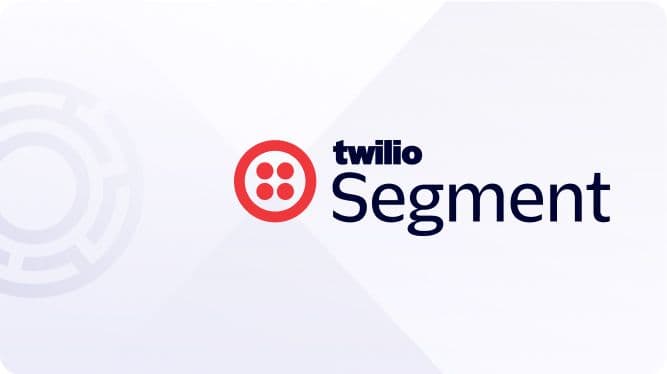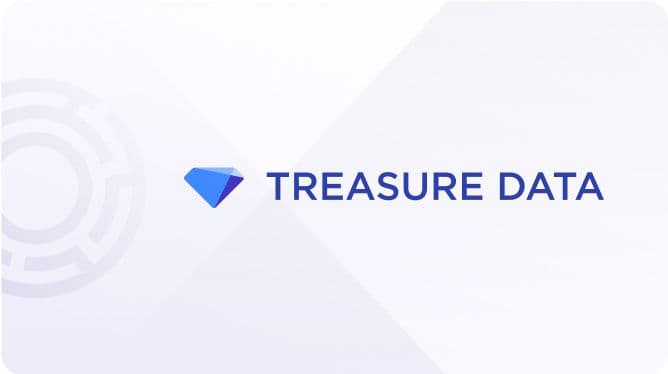COMPARE MEIRO VS. BLOOMREACH
The best Bloomreach alternative
Meiro is a flexible, composable Customer Data Platform (CDP) focused on giving enterprises full control over their data and infrastructure, especially for complex or regulated industries. In contrast, Bloomreach is a CDP with a SaaS model primarily oriented for e-commerce and retail use cases. Compare Meiro and Bloomreach in terms of pricing, user reviews and other competitors.
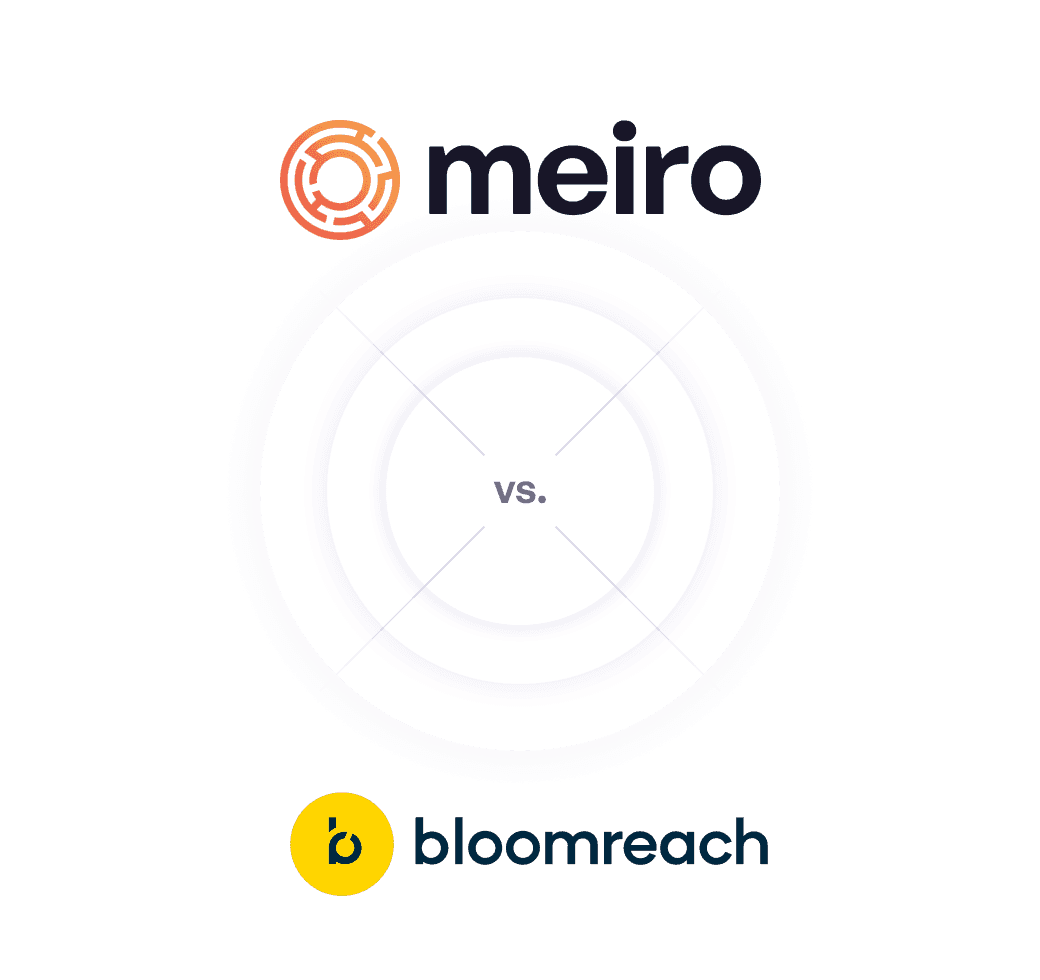












Why consider Bloomreach competitors?
Focus on e-commerce use cases
Bloomreach deeply focuses on the e-commerce sector. Companies in B2B, financial services, or media may find that Bloomreach's AI and feature set are too narrowly tailored to e-commerce KPIs and don't align with their unique customer journeys or data models.
Specific deployment and data control needs
Bloomreach primarily operates as a SaaS solution, with data hosted in specific public cloud regions in the US or Europe. This can pose a significant challenge for businesses that must comply with strict data residency laws requiring data to be stored on-premise or within a specific country.
Vendor lock-in
Bloomreach’s all-in-one suite approach can sometimes mean sacrificing flexibility. If your team needs to move quickly or requires best-in-class performance from every part of your tech stack, consider exploring composable CDP vendors, allowing you to select the best tools for each job.
Cost and pricing transparency
Bloomreach's pricing is based on modules and usage/data volume, which can lead to unpredictable expenses if you exceed usage limits or require feature add-ons. If your business prioritizes predictable budgeting, you may want to explore competitors that offer more transparent pricing models.
Compare Meiro CDP with Bloomreach Engagement
How to choose between Bloomreach and its competitors like Meiro
The fundamental philosophical differences between Meiro CDP and Bloomreach—Meiro's emphasis on data control, flexibility, composability, and transparency versus Bloomreach's heavy focus on e-commerce personalization use cases—will guide this decision.
Data Governance& Deployment Flexibility
Businesses that prefer a vendor-managed platform and have less need for deep infrastructure control or on-premise deployment, could consider Bloomreach.
However, enterprises operating in highly regulated industries such as BFSI or healthcare, which mandate on-premise, private cloud, or specific in-country data hosting, will find Meiro's deployment flexibility invaluable.
Data IntegrationCapabilities
Bloomreach is well-equipped to handle data from standard e-commerce platforms, CRM systems, and product information management (PIM) systems.
However, businesses dealing with numerous diverse, unstructured, or legacy data sources will benefit from Meiro's flexible, schema-less ingestion capabilities, Reverse ETL, and its robust integration catalogue.
Customer Complexity& Use Case Fit
Medium to large e-commerce operations, that require personalization, intelligent site search, and marketing automation specifically tailored for commerce, will find Bloomreach highly effective.
Organizations with complex B2B or B2C/household data models that require a flexible, graph-based, and highly configurable identity resolution engine will benefit from Meiro's sophisticated capabilities.
Pricing Model& Cost of Ownership
Bloomreach employs a customized pricing structure based on functionality add-ons and usage, which at scale can increase costs unpredictably. G2 reviews assign Bloomreach a "Perceived Cost: $$$$$" rating.
Larger enterprises seeking predictable pricing favor Meiro, as its costs are primarily tied to the hosting choice and offer more transparency.
Best suited for
Regulated industries (Banking, finance, insurance, telco, government entities).
Companies looking for a versatile CDP both marketing and engineering can use.
Complex B2B or hybrid B2C-B2B data models.
Privacy-conscious and data-residency-constrained organizations.
Teams adopting a composable MarTech approach with full stack ownership.
Commerce-focused companies (eCommerce, retail, D2C, B2B).
Organizations with large catalogs needing optimized product search, merchandising, and CX optimization.
Mid-market to large brands with less complex IT/infosec needs.

Organizations needing robust consent and governance features (e.g., for GDPR/CCPA).
Marketers working closely with IT on centralized data governance.
Web-first brands looking for cross-channel orchestration via a UI-driven platform.
Enterprises needing real-time tag management and web data collection.
Digital-first or mobile-centric B2C brands (eCommerce, gaming, streaming).
Companies needing fast SaaS deployment.
Cloud-native teams with internal engineering capacity for managing SDKs and APIs.
Cloud-first enterprises that don’t require data ownership or local hosting.
Cloud-native teams that don’t need complex identity models or infrastructure control.
Teams needing a plug-and-play CDP to route data to SaaS tools.
Teams prioritizing ease of use and rapid deployment over customization.
Startups and SMBs needing CDP capabilities without a significant upfront investment.
Data-mature organizations that have already invested in their DWH and data modeling capabilities.
Product-led and PLG companies with in-house data science/engineering teams.
Businesses focused solely on reverse ETL, not data ingestion or identity resolution.
Data teams looking to activate SQL-modeled segments in external tools using Hightouch as a delivery mechanism
Data and engineering teams favoring open-source, warehouse-first architecture, or self-managed data pipelines.
Startups to mid-size teams needing control over data flow, schema, and destination logic.
Product-led orgs that don’t need built-in activation tools.
Teams needing simple identity handling and flexible schema mapping.
Teams needing industry-specific accelerators and pre-built templates.
Enterprises prioritizing vendor-led deployments and services.
Especially large enterprises with extensive and complex data landscapes.
Businesses with dedicated data scientists, analysts, and engineers.
How do users evaluate Bloomreach vs Meiro
I like that with Meiro, all the data points are provided by us, as they can work with our own internal data as well as event tracking on our applications. This gives us a lot of control over our data and ensures consistent data definitions for building segments. It has really helped empower our teams to create their own audiences, segment users for more personalized marketing, and supercharge our product personalization efforts!

We have been using Meiro CDP for almost 5 years now. This is one solution that is very flexible from a hosting perspective and it has given us the possibility to have our data hosted within Indonesia and hence allowing us to be on-premise as well. The consulting team is very proactive with their services & the response time meets our requirements.

They have a team of professionals who make onboarding smooth. They provide great guidance, and I can honestly say that their knowledge comes from extensive experience. If I am thinking about CDP and how it should look within the company, I truly believe that Meiro CDP is a benchmark.

Meiro has streamlined our processes, enriched our data, and provided invaluable customer insights, enhancing our campaign approach and efficiency. The exceptional support from the Meiro team has been instrumental in our success. I highly recommend Meiro CDP to businesses aiming to optimize marketing strategies and drive growth.

Meiro is an extremely valuable tool for us, whether it's data analysis or segment personalization. This tool has a firm place in our marketing mix.


Give a shot to Meiro. Request a product tour with our solution architects today!
Compare Meiro with other CDP vendors
Featuring 300+ fully-managed native integrations
Meiro will always play nice with the rest of your tech stack, no matter the apps, services, or vendors you already use or change over time.


